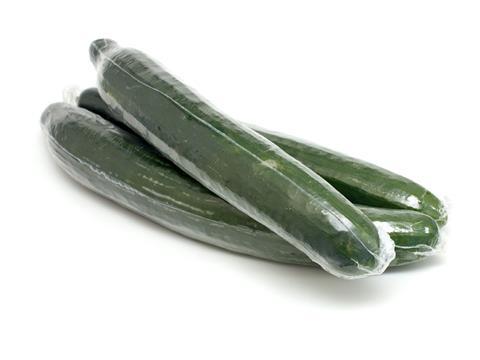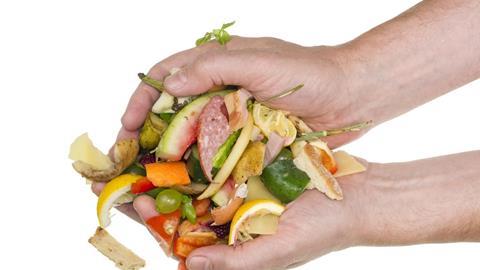In a period of time where panic buying, stockpiling, and heightened consumer anxiety over hygiene and product protection is paramount, the issue of how to reduce food waste is more pressing than ever.
Innovative food packaging offers product protection and improves food quality and shelf life. But does this actually result in a tangible reduction of food waste? This question was the subject of an Austrian industry research project "Stop Waste - Save Food".
The industry research was compiled by around 30 partners from science and research institutions, including the BOKU (University of natural resources and life sciences) in Austria, and consultants denkstatt GmH as well as OFI (Austrian research institute for chemistry and technology). The most important findings from three years of research were summarised in an industry guide, targeted at packaging manufacturers, food processers and retailers.
Elisabeth Skoda spoke to Bernd Brandt, senior consultant at denkstatt, to find out more about the project and some of the surprising results it yielded.
ES: What steps can packaging companies take in order to find the ideal balance between sustainability and product protection?
BB: The different aspects of designing packaging are more challenging than they look at first glance, and many aspects have to be taken into consideration. What constitutes the optimal shelf life? Sometimes shelf-life demands can be exaggerated, as there may be situations when a product in real life never stays on the shelf for that length of time. The next question to ask is: how long does the consumer store the product? It’s important to find the right level of product protection. The second aspect covers options and potential alternatives. For example, vacuum packaging is a good option to keep pork fresh for longer but is less popular with consumers in Austria than other alternatives. Some people believe that biodegradable film is always better, but from a data point of view, that is not the case. Ideally, sustainability needs to be assessed based on data.
This links to the question of acceptance. In the course of our project, we spoke with many retail representatives, and it became obvious that even if retail knows what the most sustainable packaging would be, consumers won’t always accept it. For example, egg packaging made from recycled PET bottles comes out as a winner in lifecycle analyses, consumer acceptance is low, as it is made from plastics. A final point is the circular economy feasibility. Even if a pack is recyclable, that does not automatically mean that it will be recycled. It really is an art to do all these questions justice, and I do respect packaging manufacturers that face up to these challenges. Therefore it is very important that retail and research institutes work closely together.
ES: How would you summarise ‘theory and practice’ of how packaging can make food keep for longer?
BB: Retailers generally have fairly precise records on waste amounts. On average, if you increase shelf life by 100%, waste is reduced by 40%. However, as was found in research at BOKU university, it is hard to measure the amount of waste at the consumer’s home. As soon as you ask the consumer how much they throw away, he or she acts differently and becomes more self-aware. It was attempted to approach the problem with consumer simulations and surveys, but it’s hard to gain solid data from that. It becomes obvious that it depends on how quickly a consumer uses up a product at home, and how they store it. Is food refrigerated properly, is it kept in the original packaging, do consumers use the resealability features or do they put food in a different container? Many consumers want to get rid of the original packaging, which reduces the usefulness of any packaging features. The guidelines are an important first step in the direction of evaluating this.
ES: Could you give us some examples of life cycle assessment for packed and unpacked products?
BB: A classic example is the cucumber wrapped in plastics. Consumers generally don’t like this practice, so supermarkets decided to offer the cucumbers without plastics. We have data from several months across the whole of Austria, and by leaving out plastic packaging, food waste increases more than twofold. This is a clear result. It confirms that if you don’t keep moisture in the cucumber, it goes soft more quickly and waste increases, as people won’t buy the cucumber. Of course you can tweak storage conditions and logistics, but not using packaging makes the biggest difference.

Another interesting example is ham. Consumers in Austria like to buy it open from the fresh food counter. BOKU university ran a simulation in which a range of test subjects was asked how a piece of ham is perceived after opening, from day one up to twelve days, and to judge what it looks, smells and tastes like. The fresh food counter ham was only eaten up until day seven, whereas the packaged ham was eaten until day twelve.
On the subject of jams, while single-use glass packaging is quite resource-intensive, jam jars don’t have to be chilled and keep a long time, which means using heavier, bulkier packaging can be justified in this case.
ES: Are there any examples where the life cycle balance favours unpackaged goods?
BB: With mini cucumbers, there is about 14% waste when they are offered unpackaged, but their carbon footprint isn’t very high in the first place. An elaborate package for mini cucumbers causes a higher carbon footprint. Generally, if the consumer uses up a product quickly, it’s not a problem to offer it unpacked. Consumers should be aware that they have to use their cucumbers up quickly and shouldn’t store them for too long.
In our industry guide, we devised 16 ‘commandments’ for the correct use of packaging. One key takeaway is that packaging should be avoided where it is not strictly necessary for product protection or other requirements, and when not using packaging doesn’t create more food waste.
ES: How can sweeping judgements about certain packaging materials be avoided?
BB: Less black and white thinking would be great. We create data on packaging sustainability, and we notice when decision-makers say something that isn’t based on facts. Often, they just do what the public wants, what consumers like, and what sells well. If we want to act sustainably, we shouldn’t just listen to the wishes and intentions of the consumer, but we should measure if anything improves due to the change. It remains a huge task to gather neutral data, to communicate and to explain.
In our research, we compared the proportionality of packaging and products, and it turns out that about 3% of the carbon footprint rests within the packaging, and 97% within the food. That shows where the big lever is and how important it is that food arrives well protected. We say in our guidelines that there isn’t a good or bad packaging material as such. When choosing a material, necessary packaging function and low effect on the environment should come together.

ES: How can better cooperation to avoid food and packaging waste along the supply chain be organised?
BB: Our project aims to create collaboration across the value chain. There are a lot of demands on retail already, but it is important to cooperate, and it has to be clear both from the packaging manufacturer and retail side what the benefits of new innovations could be. After all, food manufacturers and retailers could just shrug their shoulders and say that it is actually beneficial for them if a lot of food goes off at the consumers’ house as it means they can sell more products. Waste in the shop itself of course is a different story, as this cuts directly into their profit margins.
ES: Do you think that the current coronavirus crisis will have an impact on the public’s perception of packaging?
BB: The current crisis will certainly contribute to consumers becoming strongly aware of the usefulness of medical products (face masks, single use gloves, protective clothing, equipment for tests and their evaluation). In the area of food, the hygiene aspect is becoming increasingly more important. Packaging can offer the kind of protection that many people especially value in this current situation.
ES: In conclusion, what would you describe as report highlights?
BB: The guidelines highlight how important the topic of food is when talking about the carbon footprint. This hasn’t fully arrived in the general public’s awareness. In truth, it is big chunks such as food and mobility where big savings can be made in our carbon footprints. Packaging is a product that can help us to use valuable resources more efficiently.















